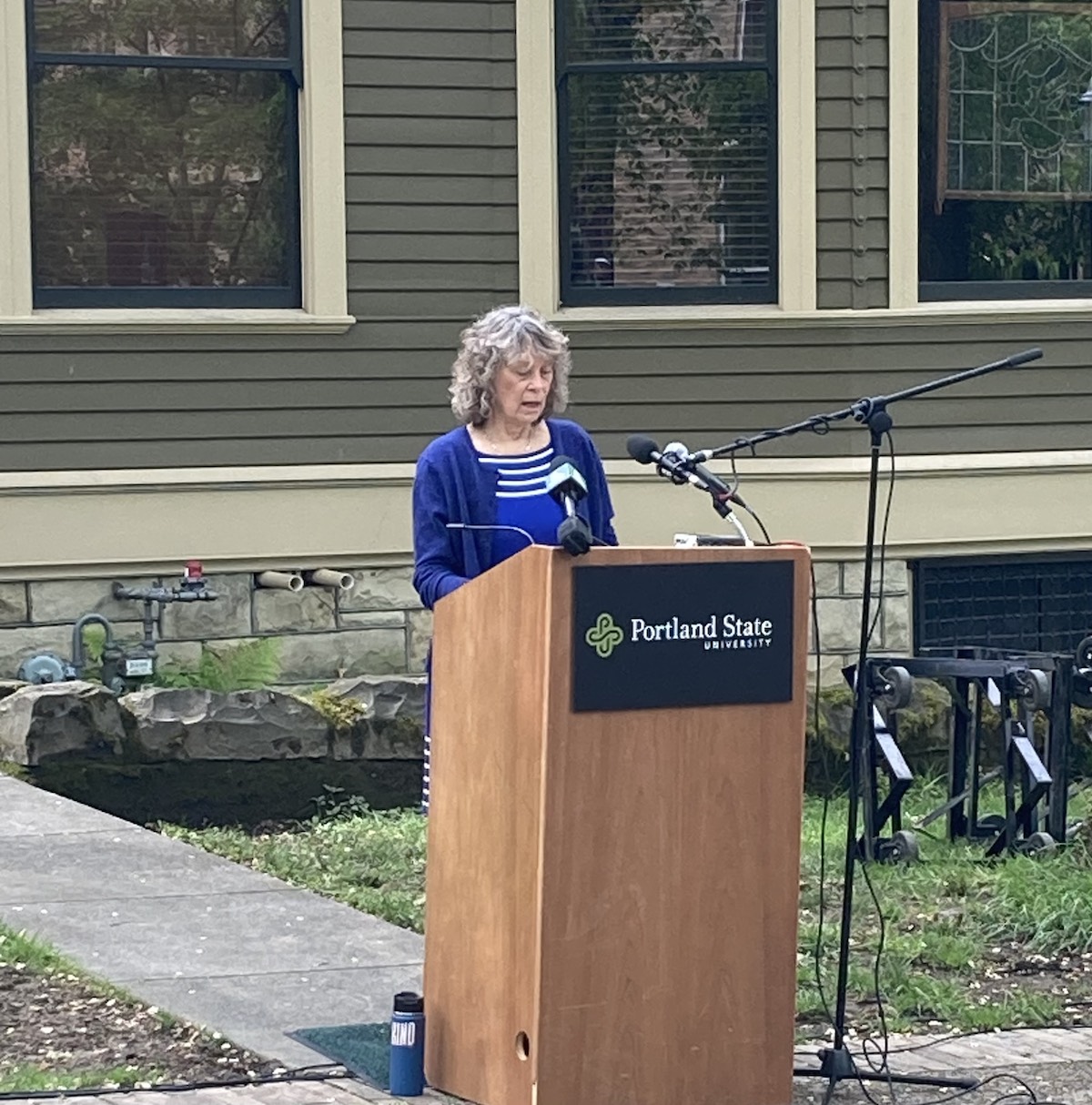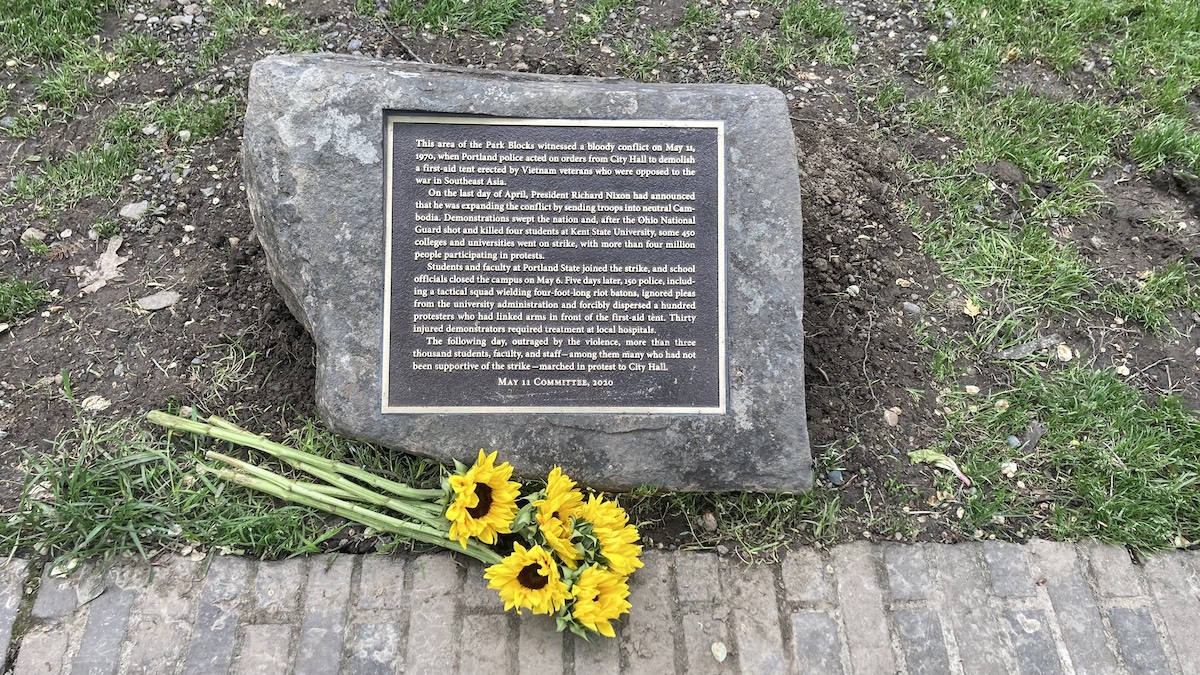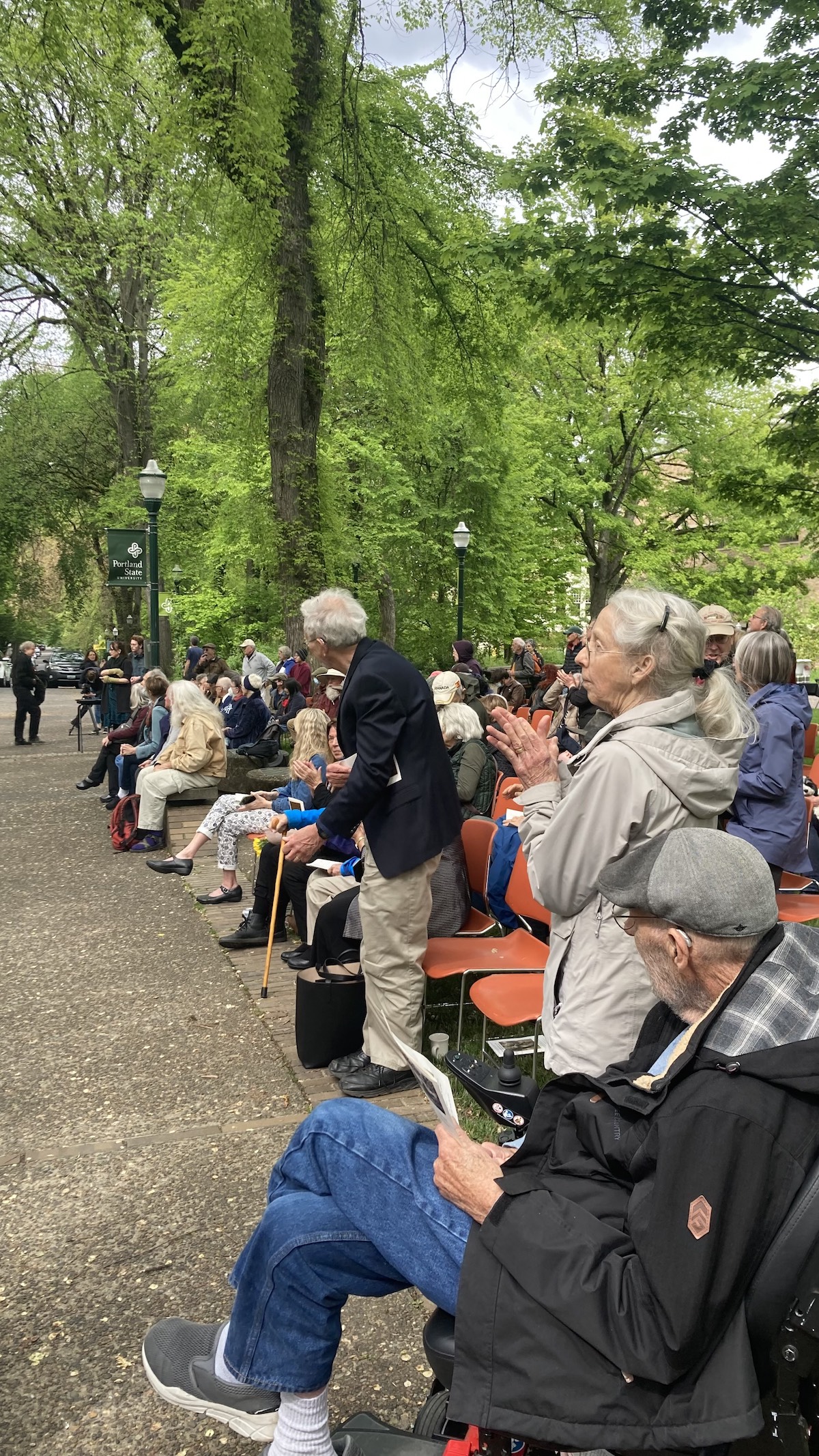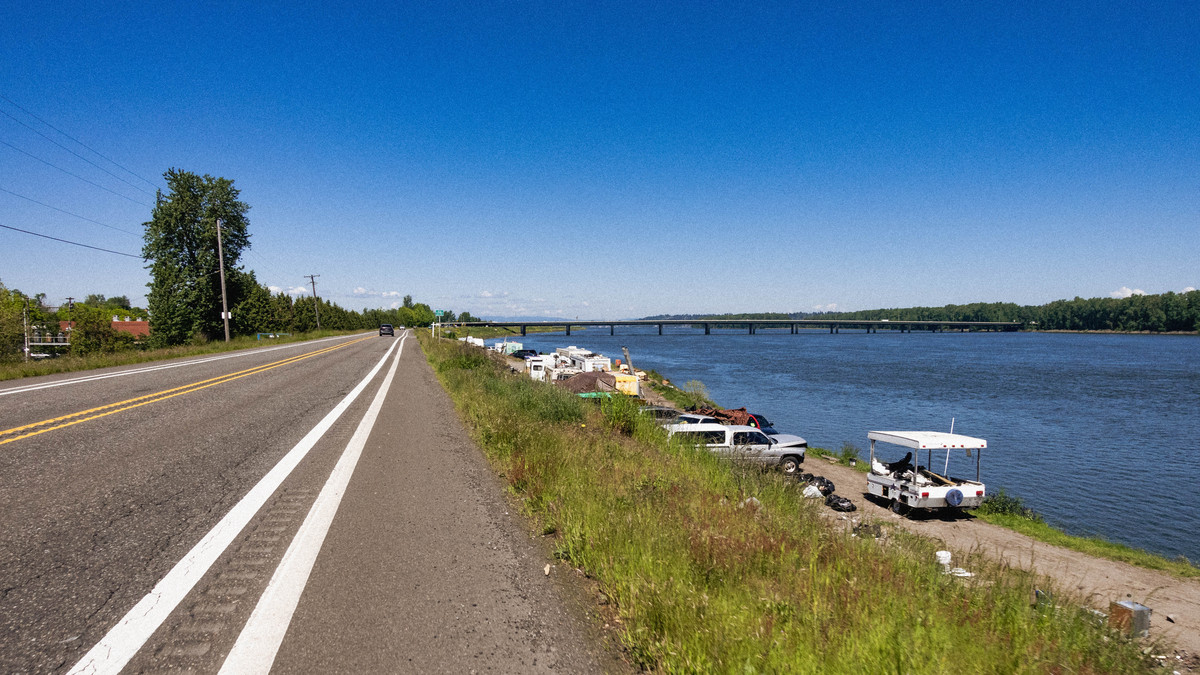Portland State University alumni, faculty and community members gathered outside the Simon Benson House on May 11, 2022 to celebrate the installation of a plaque that commemorates the protestors who were attacked by police on May 11, 1970.
The festivities began with a few opening words from Cathy Wood Wyrick, who asked all to stand for the recording of Marian Anderson’s 1939 Lincoln Memorial performance of “America (My Country, ‘Tis of Thee).”
After the song concluded and all were seated, Aimee Shattuck—Interim Dean of Students at PSU—took the podium. She spoke at length on how the protests were a foundational piece in her political maturation.
“When I give new staff or student leaders an orientation to who we are, I always talk about the 1970 protest and the anti-war, civil rights and feminist movements because that’s when Portland State gelled in its identity,” Shattuck said. “Current students may not realize how they are tethered to events 52 years ago, but just as my political identity and beliefs were shaped by the stories I heard and the values before me, so is the identity of Portland State.”
PSU President Stephen Percy spoke next, sharing his own memories of the period and his views on action needed today.
“Now more than ever we need people who stand up for justice, what’s right and who gets involved,” Percy said. “I worry about things today because I’m afraid not enough of us are standing up.”
Wyrick took the stage to give a detailed account of the events. She noted that United States military involvement in Southeast Asia, the unjust incarceration of Black Panther Party member Bobby Seale and a grape boycott to support migrant agricultural workers were a few key reasons students were standing up to strike.
“When a hundred students and faculty refused an order to disperse in an act of civil disobedience, they were forcibly attacked, leaving 31 injured,” Wyrick said. “Both strikers and their opponents united 4,000 strong in a march to City Hall the next day.”
In an interview beforehand, Wyrick shared her own account of the event.
“By 10 o’clock the night before we had a plan and a timeline for how things would go down,” Wyrick said. “So I went home and went to sleep. I had no idea. All of a sudden I heard all this noise and I came out and all these people were running down the street screaming and the police were there waving their batons.”
Wyrick said that the ceremony was held not to recycle old grievances, but unify through sustaining democracy and human value across the nation and world.
“We hope our example inspires young people to work in a respectful and democratic manner for a better and more peaceful world in any venue they see fit,” Wyrick said.
Strike committee member Clifford Walker spoke next. He described the moment in which he came across the protest.
“I was walking across the Park Blocks and there was an activity right here,” Walker said. “And someone called out, ‘Brother will you join us?’ And that sure was the nicest thing I had heard since being at Portland State.”
He quickly joined the thralls, but expressed concern to other students when the police arrived. Despite his calls, the students remained strong as the police bore down on them.
Today, Walker saw the event as “very, very, very important” and had “an association that we will carry with us for the rest of our lives.”
Sue Ellen White—sound engineer and interviewer for 1970 short film The Seventh Day—took the stage after Walker. She described The Seventh Day as an unpolished and visceral film about the student strike produced in an impromptu, passionate manner. White also described how the film’s creators had little prior practice at filmmaking.

“Tjerk Dusseldorp and Charles Auch Jr. spent all day, and most often into the night, working on the film,” said White in regards to the film’s production process. “They spliced film with razor blades, compensated for blurry or nonexistent footage, learned how to sync sound recordings and pulled together a galvanizing documentary that won a national student film award.”
Joe Bernt, Portland State Vanguard editor at the time of the protests, shared his frustration with mainstream media at that time.
“Most of the papers ignored activists at Portland State until barricades blossomed,” Bernt said.
Despite the barricades and brutality, most national media ignored the protests with only vague mentions to unrest in the Northwest. Bernt pushed back against any sentiment that the protests did nothing.
“Orders from City Hall encouraged baton swinging squads to beat rather than arrest protestors, which shocked Portland’s sensibilities,” Bernt said. “Whether the student strike altered Portland State, it clearly affected relations between residents and the police, and that has continued today.”
Doug Weiskopf, a strike committee member, detailed his souring on electoral politics after the losses in 1968 that led him and a dozen other students to organize a PSU protest group.
“Nearly the entire pistol-carrying Portland police department—led by an elite riot squad of two dozen leather-jacketed cops glaring menacingly, armed with 42-inch long riot batons—brutally attacked and beat us exactly one week after the Kent State shootings in full view of every TV and print news camera in town,” Weiskopf said. “We feared for our lives, but peacefully stood our ground.”
He noted that the current Park Block design, made in 1974, was structured in the same way barricades were placed in 1970 as a silent homage.
Current PSU history professor and teacher at the strike’s time, David Horowitz, took the stage.
“As a faculty member who participated in the protest, I was honored to help place the strike in the University’s institutional memory,” Horowitz said.
After Horowitz spoke, the plaque’s creator, John Laursen, took the stage. He wasn’t present on May 11, 1970, but swiftly joined the march to City Hall the next day, along with thousands of other outraged citizens.
Laursen said he hoped that the plaque will be “a strong, solid testament to the courage and tenacity of the people who were here in 1970 and who stood up for what was right.”
The ceremony concluded with Wyrick reading the plaque’s content and thanking the PSU Alumni Association, Student Activities and Leadership Programs (SALP) and the many other individuals and groups that made the event a reality.
“We hope this ceremony will play a part in placing the events of 1969 and 1970 within Portland State’s institutional memory,” Wyrick said in the closing statement.







